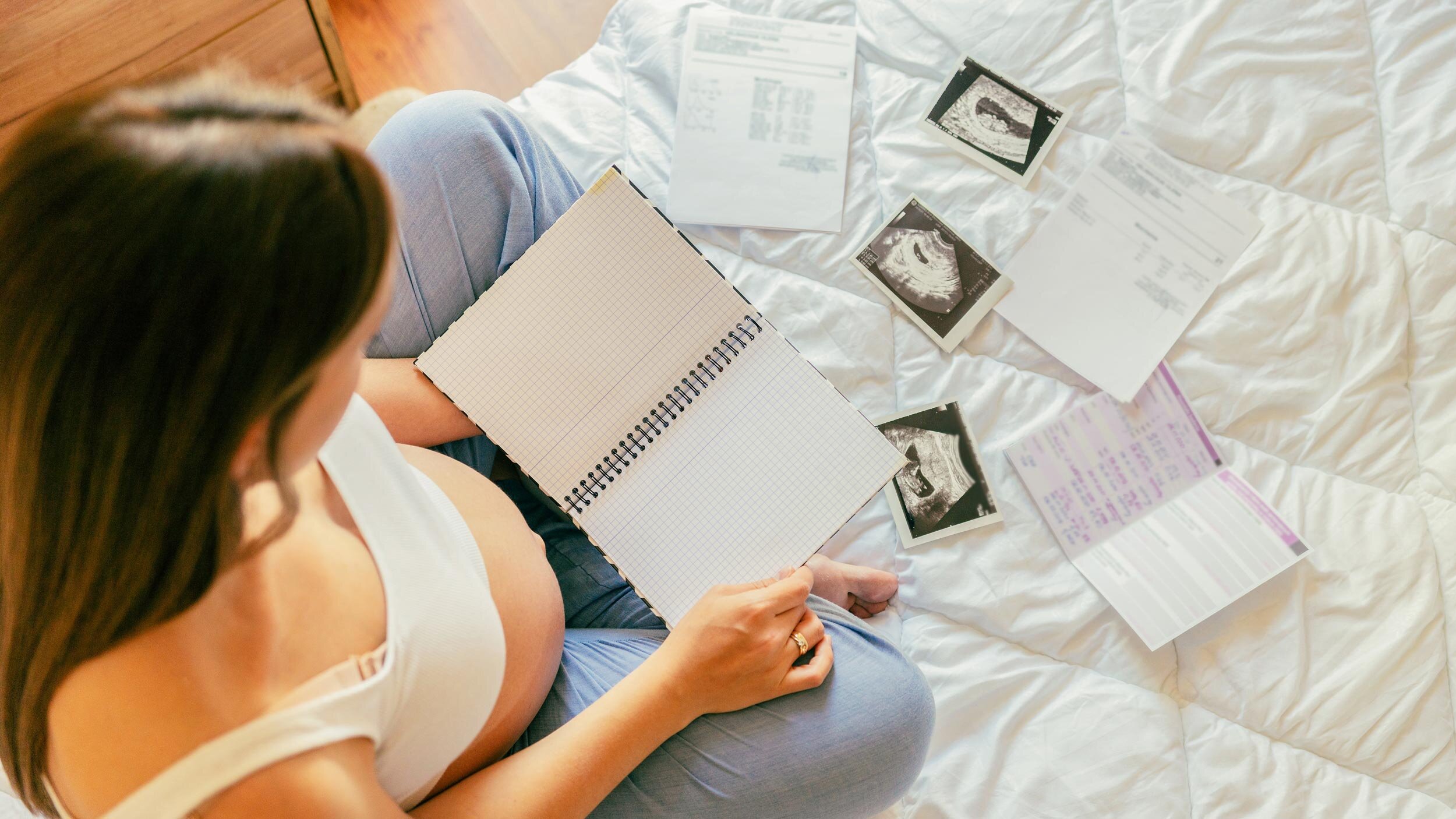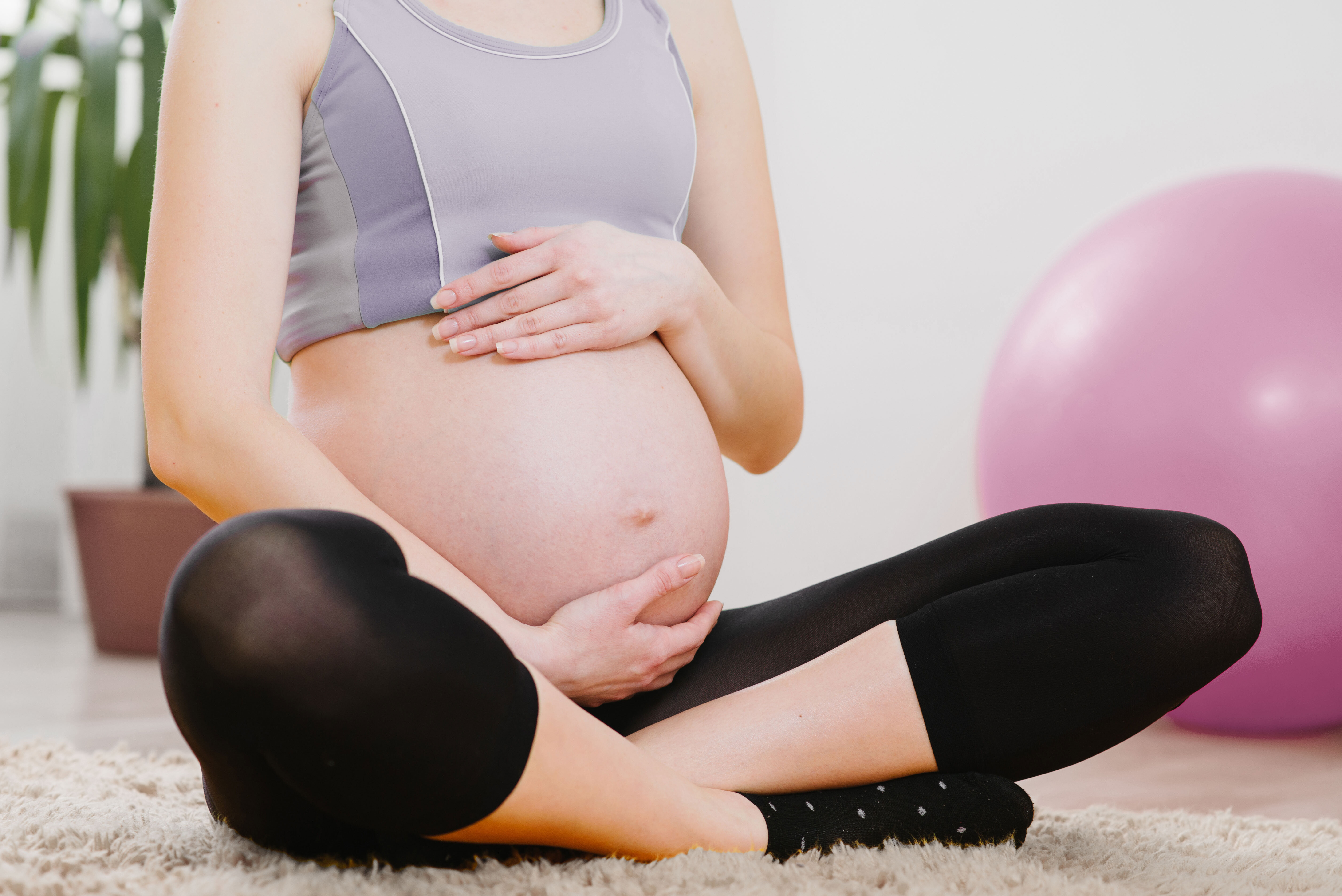Multiple pregnancies are much more common than you might think. According to data published by Twins Trust, about one in every 65 pregnancies in the UK is a multiple pregnancy (i.e. twins, triplets or more). In 2019, for instance, there were 10,757 twin births in total.
The prospect of welcoming two babies into the family at once doubles the joy and anticipation in the run-up to birth. But while twin pregnancies are great news, they also create challenges and put additional strain on the mother’s body.
How is a twin pregnancy different? When can a multiple pregnancy be detected? What are common signs of a twin pregnancy? Read on to learn more about being pregnant with twins and what it entails.
Table of content
Twin pregnancy: symptoms and signs
Twin pregnancy: risks and possible complications
Medical care during twin pregnancy
Coping with twin pregnancy symptoms: health and nutrition tips
The most important facts about twin pregnancy at a glance
Twin pregnancy: frequently asked questions
Twin pregnancy: symptoms and signs
Twin pregnancies are typically discovered during the first ultrasound scan in pregnancy which takes place between weeks 11 and 14. Sometimes the two embryos and their respective amniotic sacs might already be visible on ultrasound earlier. For instance, if an ultrasound scan is used to make sure that there really is a pregnancy.
However, there are also various other signs that can indicate a twin pregnancy. These include:
- increased HCG levels in pregnancy (i.e. higher than usual)
- more intense pregnancy symptoms (e.g. fatigue, nausea and vomiting)
- excessive pregnancy weight gain and quickly growing belly (with the bump showing earlier)
Good to know: Depending on the position of the babies, it may not be possible to distinguish the two foetuses during the first ultrasound scan. That’s why sonographers usually also check for multiple pregnancies during the following ultrasound scan appointments.

Twin pregnancy: risks and possible complications
Being pregnant with twins is always associated with an increased risk. This is why multiple pregnancies are classified as high-risk pregnancies and are typically monitored more closely. Common risks associated with twin pregnancies include:
- higher risk of premature birth and malformation
- increased risk of complications
- risk of one of the foetuses not surviving
- risk of one foetus being malnourished
- increased risk of high blood pressure, gestational diabetes, anaemia and pre-eclampsia (high blood pressure in combination with increased protein excretion in the urine)
- premature labour or opening of the cervix
In addition to an increased risk of complications, a twin pregnancy is also more strenuous for the mother’s body. This notably means:
- additional strain on the mother’s skeleton, connective tissue, muscles, etc.
- pregnancy swelling due to increased retention of fluids (more frequent than with a normal pregnancy)
- shortness of breath (especially in the third trimester when the growing babies restrict the lung volume)
- increased foetal movements due to the limited space in the abdomen
Twins are often born earlier than singletons which typically means that they also have a lower birth weight. A normal vaginal birth is perfectly possible with twins. However, if the babies are in an unfavourable position or if there is only one amniotic sac, a surgical delivery (e.g. caesarean section) may be necessary.
Good to know: The actual risk of complications in twin pregnancy depends on whether or not each foetus has a separate amniotic sac and placenta. If this is the case, the risk of complications is significantly lower. If there is only one placenta, one of the foetuses might end up being malnourished.
Medical care during twin pregnancy
As twin pregnancies are generally associated with a higher risk than singleton pregnancies, antenatal care is often different for mums-to-be who are expecting twins.
As soon as it is clear that there is more than one baby, the antenatal care schedule is usually adjusted because women who are pregnant with twins are often offered more antenatal check-ups. However, the number of tests and scans that are offered depends on the type of twins, i.e. whether they share a placenta and amniotic sac or not.
In the case of identical twins who share a placenta and a sac, the pregnancy is typically monitored more closely to reduce the risk of complications, such as one of the babies being malnourished. This is because in such cases, the risk of complications (e.g. one twin being undernourished) is particularly high.
Other than the number of appointments, antenatal care with twins might also differ from a singleton pregnancy with regard to the scope of the tests and scans that are performed. Depending on the identified risks, there might be additional ultrasound scans or CTG monitoring during pregnancy. Complicated twin pregnancies might even be referred to specialist foetal medicine centres for antenatal care.
Women with a twin pregnancy are also looked after by a nominated antenatal team with experience in managing a multiple pregnancy. Also, future mothers of twins receive more in-depth professional support during pregnancy that is tailored to their individual needs and circumstances.

Coping with twin pregnancy symptoms: health and nutrition tips
Being pregnant with twins is naturally even more exciting than a normal pregnancy. However, it is important to remember that a twin pregnancy also comes with additional challenges. That’s why future twin mums need to take good care of themselves during this exciting yet challenging time. Here are a few self-care tips to better cope with twin pregnancy symptoms.
- Eating a healthy diet: Eating a healthy pregnancy diet is important for all mums-to-be, regardless of whether they are expecting one or two babies. A balanced diet keeps the body healthy and ensures that the foetuses receive all the nutrients they need.
- Getting enough rest: Being pregnant always puts a strain on the body, but even more so when there are two babies in the womb. Taking regular breaks and getting enough sleep is important to help the body recover.
- Drinking plenty of fluids: Every mum-to-be should make sure to drink plenty of water and unsweetened drinks throughout the day. But for those with twins, ensuring sufficient fluid intake is particularly important, even more so if they suffer from nausea and pregnancy sickness.
- Having a detailed birth plan: As twins are often born prematurely, nothing should be left to chance when planning the birth. Birth plans and wishes should be discussed as early as 24 weeks pregnant. The place of birth should have been chosen by 28 weeks. Also, the hospital bag should be packed in time.
The most important facts about twin pregnancy at a glance
Twin pregnancies are different from singleton pregnancies. Here are the most important differences, risks and symptoms at a glance.
- Twin pregnancies are considered high risk. This is because carrying twins comes with a higher risk of premature birth, malformation, high blood pressure, gestational diabetes, anaemia and pre-eclampsia.
- This is why multiple pregnancies are monitored more closely than singleton pregnancies.
- Apart from the fact that future mums of twins typically have more antenatal check-ups, there might also be additional ultrasound scans to monitor the development and growth of the two foetuses.
- With two babies, there is less space in the womb. Twins are therefore often born prematurely.
- Women who are pregnant with twins often suffer more from typical pregnancy symptoms such as nausea. They often also gain more weight during pregnancy.
- Typical twin pregnancy symptoms include early weight gain, increased HCG levels and a rapidly growing belly. However, only an ultrasound scan can provide certainty.
Twin pregnancy: frequently asked questions
Pregnant women who learn that they are pregnant with twins often have many open questions. Here are the most frequently asked questions about twin pregnancy at a glance.
What is the difference between identical and non-identical twins?
Identical twins occur when a fertilised egg splits in the first few days and forms two separate germ cells from which the embryos form. Whether or not there are two separate placentas and amniotic sacs depends on when the egg divides into two and how close the two cells are to each other.
Non-identical twins, on the other hand, happen when two eggs are fertilised simultaneously by two sperms and implant separately in the uterus wall. Unlike identical twins, non-identical twins can be of different sexes.
The resemblance between the two babies is yet another difference. Identical twins look very similar and always have the same sex. Non-identical twins, on the other hand, are no more similar than normal siblings.
What causes a twin pregnancy?
Multiple pregnancies are far more common nowadays than they used to be. There are several reasons for this. One reason is the increasing rate of fertility treatments which often result in twin or multiple pregnancies.
Another reason is increased maternal age. Pregnancies happening later in life are more likely to deliver twins or multiples. In some cases, twin pregnancies also run in the family, so to speak. In some families, women have an inherited tendency to release more than one egg.
In which month can twins be detected?
The most reliable method of detecting a multiple pregnancy is by ultrasound. In many cases, the sonographer recognises whether there is more than one baby in the womb during the first ultrasound scan which takes place at around 11 weeks.
However, it is possible that only one foetus is visible during the scan. For instance, because one twin is hidden behind the other one. In such cases, it may not be until the second ultrasound scan that the twin pregnancy is detected.
What are common signs of a twin pregnancy?
Only an ultrasound scan can give clarity on whether or not there is more than one baby. However, there are some common signs of a twin pregnancy. These include high levels of HCG in early pregnancy, more intense pregnancy symptoms and a faster weight gain combined with early showing of a baby bump.
How long does nausea last in twin pregnancy?
Women who are pregnant with twins often struggle more with typical pregnancy symptoms such as nausea. As pregnancy-related nausea affects every mum-to-be individually, there is no clear answer to the question of how long the symptoms will last.
Are twin pregnancies high risk?
Twin or multiple pregnancies are generally considered high risk. However, it is important to remember that having a high-risk pregnancy does not necessarily mean that complications or problems will occur.
From a medical point of view, the classification ‘high-risk pregnancy’ means that the antenatal team is more vigilant than usual in order to recognise and prevent possible complications at an early stage.
What precautions need to be taken in a twin pregnancy?
What precautions need to be taken in a twin pregnancy depends on the identified risk. No two twin pregnancies are the same. The antenatal team will assess the individual risk of complications and adjust the antenatal care schedule accordingly.
How long should you work when pregnant with twins?
There is no fixed rule as to when future twin mums should start maternity leave. The law says that pregnant women can start maternity leave as early as 11 weeks before the expected date of delivery.
Due to the fact that twin pregnancies are physically demanding, it is often recommended that women who are pregnant with twins start maternity leave as early as possible to give their body a little rest before birth.
Do you get a longer maternity leave with twins?
In the UK, every new mother gets the same amount of maternity leave, regardless of how many babies she has. The total maternity leave entitlement is currently 52 weeks. Under normal circumstances, maternity leave can start 11 weeks before the calculated due date (at the earliest). However, in case of a complicated twin pregnancy that puts the health of mother or baby at risk, maternity leave might start earlier if this is considered necessary.
When is the best time to announce a twin pregnancy?
Being pregnant with twins is big news. However, as a multiple pregnancy can also lead to complications and creates additional challenges, announcing the big news is not always so easy, which is why many future twin mums are unsure about how to approach this.
The most important thing is that the partner should hear the news first, followed by the rest of the family. Couples who are expecting twins often wait a little longer before sharing the news with family and friends because twin babies are more susceptible to miscarriage in the first few weeks of pregnancy.
Where to find other mums-to-be who are expecting twins?
As twin pregnancies are nowadays far more common than they used to be, it is not difficult to find other mums-to-be who are also expecting more than one child. Just like for singleton pregnancies, online forums and local pregnancy groups are good places to socialise with other future mums.
References
- https://twinstrust.org/static/89af4d2a-49fe-4d23-bbcf8475f099762f/5cdfb852-318c-4eb8-955ef8f6b8f5d6c0/Key-stats-and-facts.pdf
- Antenatal care with twins - NHS (www.nhs.uk)
- Pregnant with twins - NHS (www.nhs.uk)
- Giving birth to twins or more - NHS (www.nhs.uk)
- Recommendations | Twin and triplet pregnancy | Guidance | NICE
- Checking your rights - Maternity leave and pay - Acas
- Twins Trust | Maternity Leave and Maternity Pay
- Schwanger und Kind: Mehrlingsschwangerschaft
- Zwillinge: Ein- oder Zweieiigkeit besser in den ersten Wochen feststellbar: www.frauenaerzte-im-netz.de

















